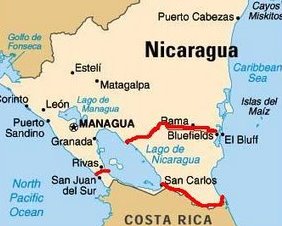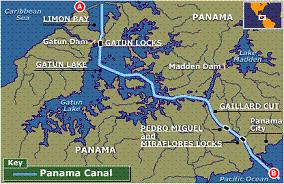|
Managua, Nicaragua - Heading into 2013, it is natural to look back over the previous year, to try and summarize the important events and trends relevant for the immediate future. Most local journalists and writers reflecting on 2012 focused on secondary economic and political events that all turn around two transcendental events that passed completely unmentioned. Many other lesser events of note either went unremarked or received only the most cursory notice.
The first event of transcendental importance in 2012 was the inauguration in January of President Daniel Ortega for a consecutive period of office. The inauguration was the fruit of an overwhelming Sandinista electoral victory in the 2011 Presidential and legislative elections. It symbolized continuity for another 5 years of policies prioritizing the social and economic rights of the impoverished majority and a comprehensive program of renewal in all spheres of national activity.
|
|
| Daniel Ortega, Sandanista Revolutionary was reelected as President of Nicaragua in a landslide victory in 2011 with 63 percent of the vote compared to 31 percent for his nearest challenger, Fabio Gadea. His inauguration took place in January 2012. |
In the regional context, the presence at the inauguration of international guests like Venezuela's President Hugo Chávez, Iran's President Mahmoud Ahmadinejad, and the right-wing presidents of Guatemala and Haiti signalled continuity also in Nicaragua's foreign policy. Venezuela is Nicaragua's most important regional ally. Iran's presence signalled the independent South-South aspect of Nicaraguan and Venezuelan foreign relations and those of their ALBA allies, Cuba, Bolivia and Ecuador. While the presence of right-wing regional leaders indicated the determination of Nicaragua and Venezuela to set aside ideological differences in the search for regional unity in Latin America and the Caribbean.
All of those clear signs present in that January 2012 inauguration were confirmed by subsequent events. Nicaragua and Venezuela have supported Iran's position on its right to develop nuclear power and on NATO's proxy terrorist assault on the people of Syria. Nicaragua and Venezuela and the other ALBA countries have demonstrated unquestionable solidarity with both Guatemala and Haiti, assisting those countries, among other areas of cooperation, to cope with the effects of catastrophic natural disasters. Guatemala and Nicaragua cooperate closely in the Central American Integration System (SICA).
Almost everything that happened on the economic and political scene in Nicaragua derived from the political continuity made possible by that historically important inauguration in January 2012. The government promoted uncompromising legislation to achieve gender equality such as the law 779 against violence against women and the law stipulating that 50% of all candidates for public office have to be women. Those and similar legislative advances along with the widely acknowledged success of the government's economic policies lead to the comprehensive victory in the municipal elections in November 2012. Sandinista candidates won 134 of the country's 153 municipalities.
The extraordinary political and economic success of the Sandinista government under President Daniel Ortega in 2012 prefigures both the consolidation and the extension of existing policies through 2013. The same is true of Nicaraguan foreign policy. President Ortega's government insists on its determination to maintain cordial relations with governments of all political shades, regardless of ideology. The initial shock and consternation caused by the need for a life threatening operation on President Hugo Chávez, has given way to a huge wave of solidarity that has bound all the ALBA countries closer together in their determination to complete the definitive second independence of Latin America and the Caribbean.
|
|
| President Ortega met with Venezuelan Vice President Nicolas Maduro earlier this month and addressed the Venezuelan people in support of President Chavez as he recovers from an life-threatening operation in Havana. |
The second event of transcendental importance in 2012 in Nicaragua, whose significance will endure far beyond the coming months of 2013, was the death of Comandante Tomas Borge at the age of 82. Tomás Borge was the last surviving founder of the Frente Sandinista de Liberación Nacional. He lived to witness not just the return of the FSLN to government in the 21st century but also to see President Daniel Ortega continue into a consecutive term of office. Comandante Borge symbolizes the deep continuity between the founding generation of the FSLN, the sacrifices of its heroes and martyrs, and succeeding generations.
|
|
| Comandante Tomás Borge, the last surviving founder of the FSLN died at age 81 on April 30, 2012 |
Tomás Borge remains an abiding Latin American archetype of ideological and political self-sacrifice, discipline and determination, of unswerving loyalty to the revolutionary cause. But beyond that revolutionary mystique, his combination of genuine humility and abundant talent set him very much apart in the affections of people throughout Nicaragua, even among former enemies, as was clear from the posthumous tributes paid to him in the National Assembly. For younger colleagues and for the developing generation of Sandinista youth Tomás Borge is an enduring and highly cohesive moral and political figure binding the historic struggles of the 20th Century to the very different challenges of the 21st.
One more event of transcendent importance came at the end of 2012 which also originated in the revolutionary triumph of 1979. In 1980, the then Government of National Reconstruction declared null the 1930 treaty ceding Nicaragua's territorial rights over the Caribbean island of San Andres to Colombia. From 1980 to 2012 every Nicaraguan government, regardless of ideology, pursued Nicaragua's legitimate territorial claims in the Caribbean. Only in December 2012 did the International Court of Justice finally recognize Nicaragua's rights to extensive maritime areas and their marine, mineral and hydrocarbon resources, previously usurped by Colombia.
With that judgment by the ICJ, Nicaragua recovered thousands of square kilometres of ocean in which Nicaraguan boats are now fishing. Nicaraguan scientific teams are analyzing the prospects for mineral and hydrocarbon resources and gathering data in relation to environmental concerns. Nicaraguan naval forces patrol the area as part of Nicaragua's anti-narcotics measures. This reality is omitted in corporate news media, who only report Colombia's empty gestures alleging that the Colombian authorities reject the ICJ ruling, whereas in practice, they tacitly accept it.
Those three transcendent events in 2012 are seamlessly joined historically, morally and politically. They set the scene for a long period of Sandinista government extending for the foreseeable future. That period of government will effect a true resurrection for Nicaragua, transforming for the better every aspect of national life from agriculture, industry and infrastructure of all kinds, through energy and technology to education, health care, sport and culture.
|
|
|
Supreme Court President Alba Luz Ramos
with Legislator Alba Palacios and colleagues |
A crucial part of that renewal has been the dynamic participation of powerful and talented women in the FSLN government. The role of Rosario Murillo has been decisive in fomenting positive teamwork to carry out effectively the complex policy decisions reached under the leadership of Daniel Ortega. Supreme Court President Alba Luz Ramos, Minister of Government Ana Isabel Morales, Labour Minister Janet Chavarría, Health Minister Sonia Castro, Housing Minister Judith Silva, Education Minister Miriam Raudez and Minister of the Family Marcia Ramirez - these women and their numerous women colleagues in themselves represent irrevocable revolutionary change.
|
|
|
|
|
Alba Palacio, Legislator, National Assembly |
Dr. Sonia Castro Gonzalez
Health Minister |
Ana Isabel Morales,
Minister of Government |
|
|
|
|
Miriam Raudez,
Minister of Education |
Marcia Ramirez,
Minister of Family |
Judith Silva,
Housing Minister |
|
|
|
Alba Luz Ramos,
President, Supreme Court |
Janet Chavarría,
Labour Minister |
|
|
|
Rosario Murillo,, poet and revolutionary hero who fought in the Sandinista revolution in 1979 that overthrew the Somoza dynasty/dictatorship. She is also First Lady of Nicaragua, married to President Ortega for 34 years. She joined the Sandanistas in 1969 and provided shelter for the guerrillas in her Managua house, among them, Tomás Borge. In the early '70s she worked for La Prensa and was arrested for her political work. She later fled to Panama and on to Venezuela. She holds degrees in English and French languages from the University of Cambridge in the UK and University of Neuchâtel in Switzerland. As a key leader in the FSLN, she has worked alongside President Ortega since he was first elected president in 1985. |
With an average of 40% of women deputies in the National Assembly, in 2012 Nicaragua placed itself at the head of Latin America and in the world vanguard in terms of women's political representation. The Inter-Parliamentary Union recognized this fact in its 2012 World Map of Women in Politics as did the World Economic Forum's report on the gender gap, which put Nicaragua fifth in the world in terms of women's political empowerment. In 2012, Nicaragua's National Assembly approved one of the most advanced laws anywhere against violence against women, recognizing all the various current forms of violence against women, including psychological abuse, patrimonial abuse and misogyny.
 |
| Several routes have been proposed for a canal in Nicaragua that would compete with the Panama Canal. |
 |
| Nicaragua Canal which would compete with the Panama Canal by cutting off time and several hundred miles from the trip from China to Europe or North America. It would also carry larger ships.(BBC map) |
2012 was also a year of important advances in projects scheduled for completion many years ahead. Apart from the developing construction of the giant oil refinery in a joint-venture with Venezuela, in September, a Chinese company announced its commitment to build an inter-oceanic canal uniting the Pacific and Atlantic oceans. The same month another Chinese company announced a contract to build a telecommunications satellite – Central America's first – planned to enter orbit in 2016 at a cost of US$300 million.
In 2013, Nicaragua will build on the record year for tourism that it experienced in 2012, when that activity grew by over 10%, the largest rate of growth in tourism in Central America, surpassing Belize and Honduras. That achievement is the result of investment and international promotion around a strategy based largely on small scale eco-tourism. That growth in activity, along with successful activities like the World Surfing Championship, have made tourism a central part of the National Development Plan up until 2020 and beyond.
Within just five years of the Frente Sandinista returning to government in Nicaragua, the country has gone from being the second most unequal country in Latin America after Colombia to being the third least unequal after Cuba and Venezuela. It is also, after Venezuela, the country in Latin America that has most reduced social inequality. Just as in the 1980s, these tremendous achievements of the Sandinista government under President Ortega go unmentioned and unrecognized because they put to shame the record of countries loyal to the failed social and economic policies recommended by the leaders of North America and Europe.
|
Carlos Fonseca (L), a founder of the Sandinista National Liberation Front (FSLN), martyred in 1976, 3 years before the Sandanistas took power; Agusto César Sandino (C), from whom Sandanistas took their name led the rebellion against the US occupation of Nicaragua and was martyred in 1934; Tomas Borge (R) the last surviving founder of the FSLN died at age 81 on April 30, 2012 in Managua. |
In 2013, President Ortega's government will continue to fulfill the vision of Sandino, Carlos Fonseca, Tomás Borge and the heroes and martyrs of the Sandinista Revolution. They will do so working united with former enemies within Nicaragua to ensure the country's steadily accumulating achievements endure for good. Internationally, promoting regional integration and South-South relations based on solidarity and cooperation, Nicaragua and its ALBA allies will continue building their uniquely successful economic and political model in Latin America and the Caribbean. Within another few years, that model will render completely irrelevant the already discredited Western model of corrupt corporate capitalism and bankrupt electoral oligarchy.
(All photos and related comments added by Axis of Logic)
Source: Tortilla con Sal
|

